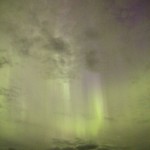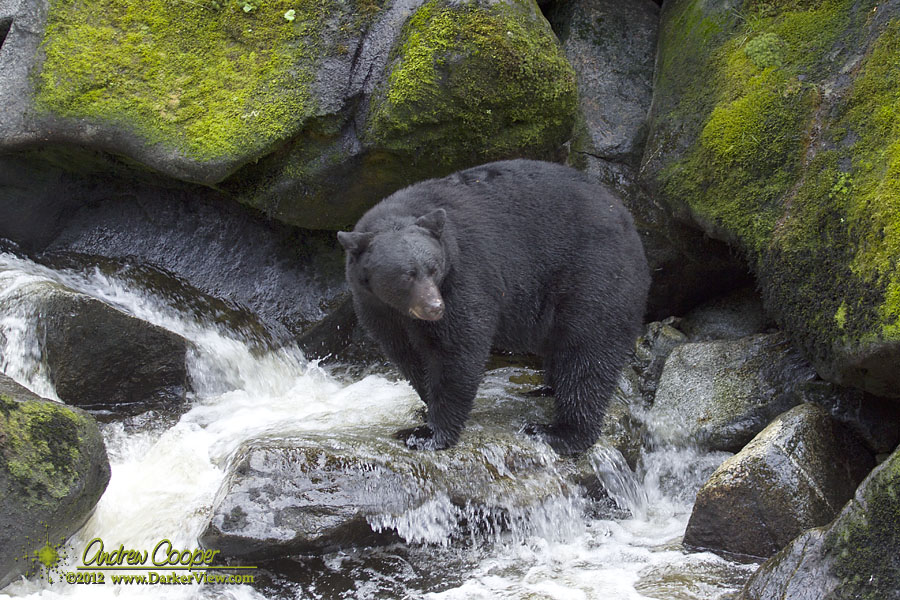There will be a very close conjunction of the Moon and Mercury this evening. A very thin moon, only 4% illuminated will pass the planet at a mere 42 arc-minutes separation. Taking into account the 30 arc-minute diameter of the Moon will leave Mercury less than 30 arc-minutes from the limb of the Moon. Mercury will be shining brightly at -0.2 magnitude, a nice match for the very young Moon. The pair will be about 15° above the horizon at sunset, allowing an excellent view of the conjunction.
New Moon
Postcard from Hawaii – Guava Jam
My mother made jam all the time when I was growing up. She still does, I am just not home to enjoy the product very often. I remember a basement with shelves and shelves of preserves. We enjoyed the bounty of summer all through the grey days of winter.
When I was home recently I was somewhat chastised by seeing jars of homemade strawberry jam. It was delightful on the morning toast. Sitting at the kitchen table, helping my mother to destroy the newspaper crossword.
Faced with a bucketful of guava from my own tree there really was no choice. I set about slicing them up for the pot. I mostly remember how to do this, my mother made sure her sons were educated in the basic household skills, to her mind this included canning. I even have the needed tools and a stash of jars and lids.
The trick with guava is seed removal, this requires a few moments in the blender then straining through a screen colander. I have never done guava before, thus the results are a bit uncertain. I referenced a half dozen recipes across the web and noted the basic proportions they had in common. All the recipes I found require no pectin, thus I added none.
All of the jars sealed successfully, so maybe I do know what I am doing. We shall see…

UFO over Mauna Kea? Not!
There is a battery of webcams atop Mauna Kea, a few of which feature good sensitivity and are useful after dark. The telescope operators depend on these cameras to evaluate conditions around the telescopes during observation. From the warm control rooms, they can see clouds overhead, or even fog blowing over the summit.
The imagery from the Mauna Kea cameras is publicly available, a very useful feature to those of us who live and work around the mountain. But there are others use this video, looking for things that those who install and operate the cameras did not intend.
A video showed up recently, purported to show a UFO maneuvering over Mauna Kea. The camera is again the CFHT Cloudcam, a very nice camera installed to give CFHT operators a good look at approaching weather. The high quality images of this camera have occasionally shown odd events in the sky. Back in June the camera recorded a strange expanding halo of light that was eventually linked to the launch of a Minuteman Missile from Vandenburg AFB.
OK, just a dot of light that appears then fades, not very impressive. Particularly interesting is that the dot of light does not move with respect to the camera. To me this suggests some nearby fixed source of light that entered the camera from another angle. Another reasonable possibility is a geostationary satellite glinting in the sun. Making this out to be a UFO is a stretch by any measure.
Tracking the Aurora Borealis
As our Sun continues through the current solar maximum we should have plenty of opportunities to view one of the most sublime of all natural spectacles, the Aurora Borealis.

Solar Activity
Solar activity waxes and wanes in an eleven year cycle. When active there are increased numbers of sunspots and solar flares. It is this activity that can have such a dramatic effect here on Earth. A strong solar flare can be accompanied by a release of enormous quantities of material from the Sun. Called a coronal mass ejection (CME) this material streams outwards from the Sun. If the Earth happens to be in the path this material will strike the Earth’s magnetic field, causing the field to distort and reverberate with the impact. Charged particles are channeled into the atmosphere along the magnetic field to create a glowing spectacle.
Our current solar maximum should run through 2013 and into 2014 providing excellent auroral viewing conditions for the next year or two.
Some Political Observations

Present were US senate candidate Linda Lingle, state senate candidates Robert Greenwell and Malama Solomon, mayoral candidates Billy Kenoi and Harry Kim, as well as county council candidates Sonny Shimaoka and Margaret Wille.
I did put together a fairly lengthy writeup, but it does not really fit here on Darker View. You can find it posted over at Big Island Chronicle.
The Moon and Venus
For those awake to see the early dawn a nice pairing of a brilliant Venus and a thin crescent Moon will grace the eastern sky. A 11% illuminated Moon will be about 6° from Venus. The pair will rise together about 03:32HST tomorrow morning, October 12th, and be over 35° above the horizon at sunrise.
Black Bear Fishing
Saturn Lost in the Sunset
Over the coming week we will lose Saturn to the Sun’s glare as it slides lower into the sunset. Today the planet is only 13° from the Sun, by the 13th the separation will have diminished to about 10°.
Saturn will pass through superior conjunction on October 24th to re-appear in the dawn sky during early November.
Aurora Borealis
This trip to Alaska offered an opportunity that I had not experienced on previous trips due to the confluence of two conditions… I would be visiting later in the year than usual, it would actually get properly dark. When visiting Southeast Alaska in June and July the amount of darkness is dramatically limited by long summer days. The second condition is even less easily arranged… Our Sun is near the peak of its eleven year solar cycle. This results in more solar activity including large sunspots and energetic solar flares.
Put the two of these factors together and there is a good possibility of seeing the Aurora Borealis.
It is only a possibility, not a certainty by any measure… This was not a trip to the far north, where the auroral circle usual sits. If one were to travel north of Fairbanks into the true arctic one is almost guaranteed to see the aurora during solar max. I would be traveling between Juneau and Anacortes, from 58 to 48 degrees north latitude. At these latitudes it would take a strong geomagnetic storm to bring the aurora south into view. The chances of such a strong storm were relatively good, we are currently experiencing an active Sun near solar maximum, averaging a decent storm every month or two. In any case the odds were a bit better than seeing the aurora at home in Hawai’i.
At least there would be no light pollution to deal with, significant outposts of civilization are sparse along the route we would be traveling. One complication would be weather… Of the twenty days I would spend in northerly latitudes, about half were clouded over, thus the odds of seeing a good auroral display were modest, maybe even unlikely.
We got lucky.


